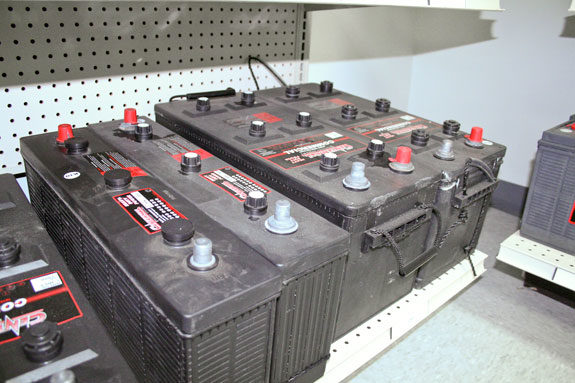The following is the first part of a series that will focus on the electrical systems of engines. The first part of the electrical system is the source, which in this case is the battery. This is where everything starts. This article will discuss the testing of batteries as well as some tips to help you troubleshoot and avoid battery problems.
A term to understand when dealing with batteries is cold-cranking amps. If a battery doesn’t have the proper cold-cranking amps, it’s not going to do the job for you.
Always follow the manufacturer’s recommendation for that piece of equipment and know that batteries are rated according to high and low cranking amps.
When batteries are tested, they are tested at one-half of the cold cranking amps with a load tester. This is why cold-cranking amps are so important. It is the amount of current needed to supply the starter with enough energy to crank the engine at a proper speed.
The range is usually around 80 RPM when the engine’s cold and about 100 RPM when it’s warm. The range can also vary from one piece of equipment to the next, but this is a very close standard.
If a diesel engine isn’t cranking over fast enough, there’s a good chance it will not start. Another point to remember is that most engines now are electronic.
Glow plugs or cold- weather starting devices are controlled electronically. The fuel injection system is also electronically controlled. So, if all the energy is taken to start the engine, you are taking energy away from the glow plugs and the fuel injection system.
If the engine is not cranking over, it won’t start. The glow plugs won’t get hot enough to heat up the air that is coming in for the fuel to burn, which will also cause problems with your injection system. The engine has to crank over fast enough for all of these individual parts to function.
A while back, I had a guy call and tell me that he had a loader that was having trouble starting. He wasn’t sure whether it was the battery, the starter, the engine, or the fuel injection system. I went to his dairy and looked at it.
I cranked it over and listened to it. I told him there was no way the loader was going to start because it was cranking over way too slow. I ended up charging the battery with a charger I had taken with me that also had a starter-cranking device on it.
So we put the charger on the battery. After about two hours, we put the engine to the crank position, cranked it over and it fired right up.
In instances like this, if the engine cranks, most times you can tell whether the glow plugs are bad or whether the injection system is the problem, and that the battery is most likely the problem.
Since the engine did start up, it eliminated the other factors and we proceeded to do a cold-cranking amp load test on the battery. The batteries were very old, way past their warranty time, and needed replacing.
Batteries will have the cold-cranking amp load test number needed for the battery to work. For example, if it has an 1100 amp cold cranking, load the battery at one-half of the cold cranking with a load tester, which would be 550 in this case.
Keep in mind that the volts should not ever drop below 9.5 volts. It should be up around 10. This is the same on any battery you test.
Also, if the battery is low-charged, it is recommended that you recharge the battery before testing it.
One of the worst things that can happen during the winter is to have a battery that has dirt or mud on top, because it causes self-discharge. Self-discharge means nothing more than the electrons in the battery discharging through the dirt and moisture.
You can test if this is happening by checking the voltage on the case of the battery using a voltmeter. You don’t even have to make contact with the terminals and you will still get a reading.
Make sure to keep your batteries, including the cables and terminals, clean and the fluid levels up on them. If you keep them dry you will have a lot less problems. Also, keep the batteries in your equipment secure, so they aren’t bouncing all over the place.
A final suggestion when it comes to batteries is to always try to buy fresh, new batteries. All batteries are coded for the time of manufacturing. Check and see how old your batteries are before buying new ones.
When you buy a battery, always ask for or see that you get a fresh battery, not one that has been sitting on a shelf for a year or two. Go to a dealer that knows about batteries. Keep in mind that dealers have special sales on batteries from time to time. PD
PHOTO by PD staff.

-
Jim Schlund
- Retired Diesel
- Mechanics Professor
- College of Southern Idaho






